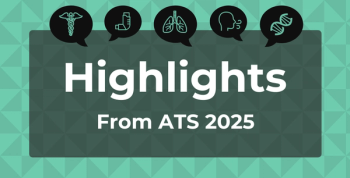
Cardiology Study Finds Better Outcomes for Veterans Getting PCI at VA Hospitals
A study comparing costs and death rates for veterans obtaining percutaneous coronary intervention (PCI) found that when the procedure was performed at a community facility versus one operated by the Veterans Administration, the veteran was more likely to die and the procedure itself was more expensive. However, death rates were similar for elective coronary artery bypass grafts.
A study comparing costs and death rates for veterans obtaining percutaneous coronary intervention (PCI) found that when the procedure was performed at a community facility versus one operated by the Veterans Administration (VA), the veteran was more likely to die and the procedure itself was more expensive.
However, death rates were similar for elective coronary artery bypass grafts, but costs were lower. Travel times for both procedures were shorter.
The study showing better outcomes at a lower cost was published Wednesday in
VCP allows veterans to go to non-VA hospitals and clinics if the VA cannot provide the needed care because of a lack of specialists, long wait times, or extraordinary travel distances.
The study looked at veterans with stable coronary disease undergoing elective PCI or coronary artery bypass graft (CABG) surgery between 2008-2011. Researchers measured access to care measured by travel distance, 30-day mortality, and costs (outcomes).
In the observational study, 13,237 veterans younger than 65 underwent PCI (stent placement), and 5818 veterans had CABG.
Veterans treated at community PCI programs were, on average, 2.4 times more likely to die within 30 days of the procedure (95% CI, 1.57-3.66).
The higher death rate post-procedure happened despite the fact that community PCI programs had significantly higher annual PCI volumes and lower publicly reported overall mortality after heart attacks than VA centers.
However, the mortality difference might not have been directly attributable to the quality of care within the community hospital. Instead, the difference might come from factors such as inadequate post-procedural care coordination or lack of compliance with prescribed medications.
Compared With VA Hospitals:
PCI (stents) in community hospitals were associated with:
CABG in community hospitals were associated with:
Higher rate of death
Similiar rate of death
Higher costs
Lower costs
Shorter travel
Shorter travel
While both patient groups were similar, patients in the VA Community Care program (CC) getting stents were more likely to have kidney disease. VA patients undergoing PCI were more likely to have congestive heart failure (21.1% vs 18.8%, P = .01) and more likely to have multivessel procedures.
Costs
PCI costs were much less in VA facilities. The mean adjusted cost of the PCI in CC hospitals was $22,025 and $15,683 in VA hospitals (P <.001). Total costs for patients undergoing PCI (the sum of the index procedure, readmission, and travel cost) were also significantly higher in CC hospitals ($23,059 vs $16,771, P <.001).
The mean adjusted cost of the index CABG procedures was $55,526 in CC hospitals and $63,144 in VA hospitals (P <.01). Total costs were also significantly lower in CC hospitals ($56,749 vs $65,264, P <.01).
The VA patients were much more likely to receive PCI from a hospital that did not meet the recommended volume threshold of 200 cases annually (41.7% for VA vs 3.7% for CC, P <.001). However, fewer VA patients received PCI in a hospital that had high risk-adjusted heart attack mortality (9.9% for VA vs 14.0% for CC, P <.001).
The VA hospitals provided 4866 (83.6%) of all CABG procedures. Compared with CC patients, VA patients undergoing CABG surgery were more likely to have atrial fibrillation, type 1 diabetes, 3-vessel and 4-vessel procedures, or an ejection fraction less than 30%.
VA patients were more likely to receive CABG surgery at a hospital that did not meet the recommended volume threshold of 125 cases annually (64.4% for VA vs 27.4% for CC, P <.001). There was no difference between VA and CC in the proportion of patients who received CABG surgery in a hospital with more heart attack deaths.
Travel Times
Patients going outside of the VA did have shorter travel times for both procedures. Veterans going to community hospitals for PCI traveled a net distance that was, on average, 53.6 miles less and incurred a mean of $153 less in travel expense. Those traveling for CABG surgery went an average of 73.3 miles less and incurred an average of $690 less in travel expense.
Limitations
The study had several limitations.
- Mortality was sufficiently rare that the power to detect differences in care quality between the 2 settings may have been limited.
- Since the patients were younger than 65, study findings may not apply to an older population.
- The data comes from procedures between 2008 and 2011, so patterns may have changed since then.
- Researchers did not study the effect of wait time on outcomes, because they did not have information on when procedures were first recommended by providers, which is why the study was limited to non-acute elective procedures.
- Other unknown differences that could have impacted results include the possibility of undetected referral bias of patients going to community CC as well as the lack of information on CC patients. The VA maintains a registry of patients undergoing PCI, but data for CC patients was not available because of the restrictions governing the national registry of patients undergoing PCI.
The VA is the nation’s largest healthcare system. Writing in a
They suggested that perhaps a future requirement for participation in the CC program should be an explicit commitment to engage in quality monitoring and improvement efforts in conjunction with the VA. They also wrote that “we believe the VA should actively monitor the clinical outcomes and costs at CC hospitals and provide this information to veterans and their VA clinicians to help them choose the most appropriate setting for their individual needs for coronary revascularization.”
References
1Barnett PG, Hong JS, Carey E. Comparison of accessibility, cost, and quality of elective coronary revascularization between Veterans Affairs and Community Care hospitals [published online January 3, 2018]. JAMA Cardiol. doi:10.1001/jamacardio.2017.4843.
2Resnic FS, Gadey G. Coronary revascularization for veterans—there’s no place like home [published online January 3, 2018]. JAMA Cardiol. doi:10.1001/jamacardio.2017.4864.
Newsletter
Stay ahead of policy, cost, and value—subscribe to AJMC for expert insights at the intersection of clinical care and health economics.








































